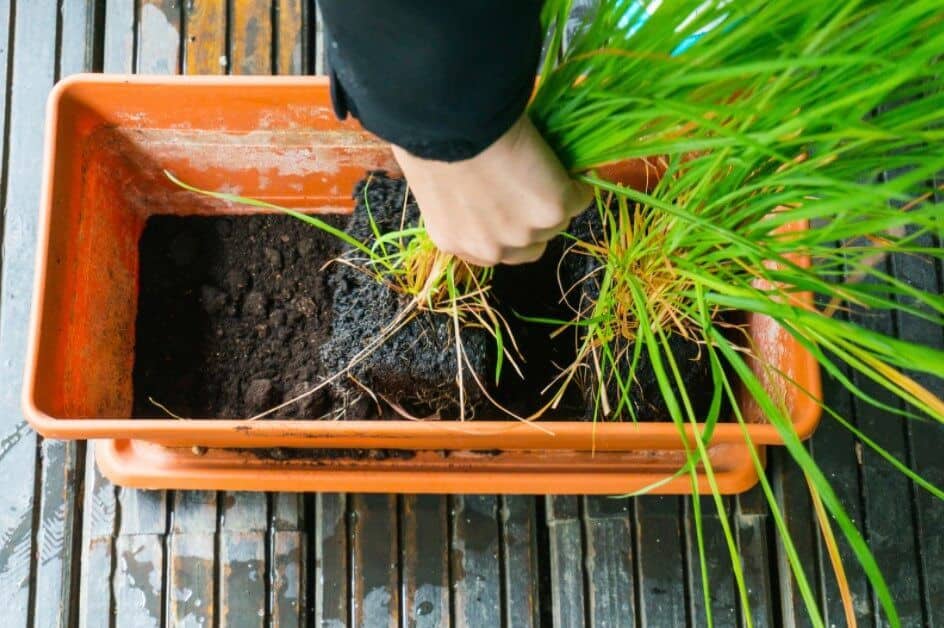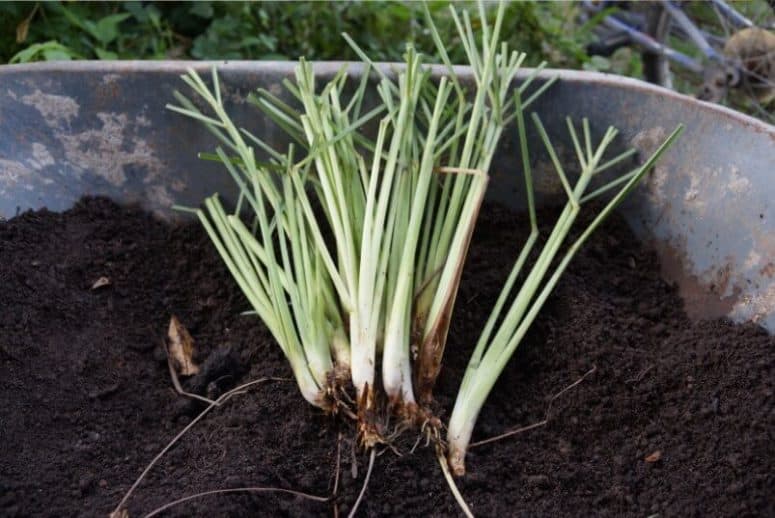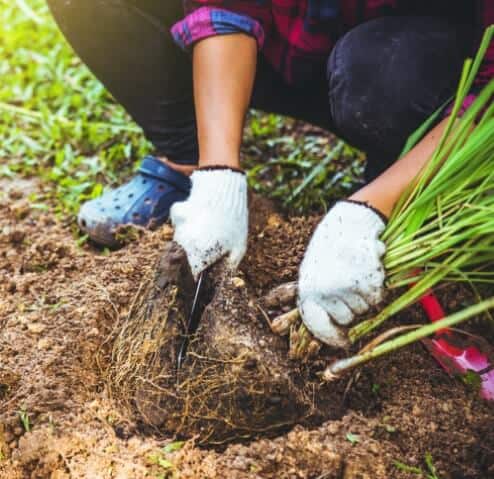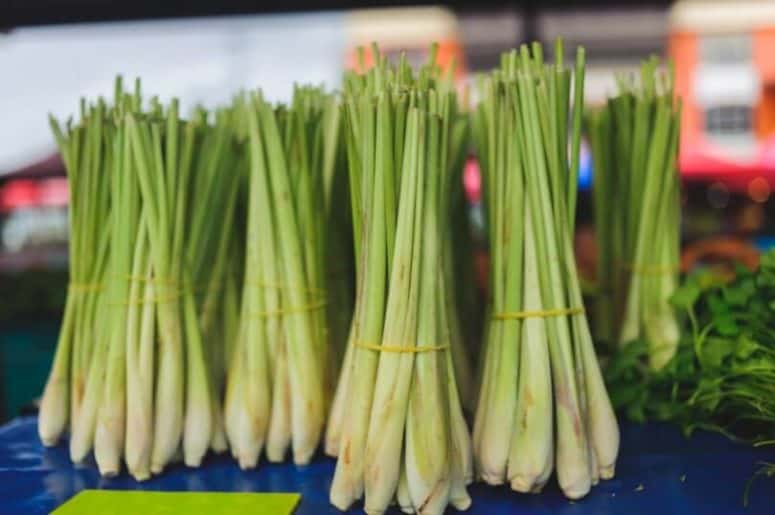How to Grow Lemongrass At Home (A Beginner’s Guide)

Lemongrass is a native herb from tropical regions of Asia and especially the Indian subcontinent. Like its name, lemongrass has a pungent lemony flavor with a warm sensation like ginger’s taste.
This is personally one of the must-there herbs in my mom’s kitchen because this herb goes well with almost all hot food. You can choose to use dried or fresh lemongrass in your dish.
So, why not grow them? It is one of the easiest herbs to grow, though!
Lemongrass Varieties
But before we start planting lemongrass, it’s good to know the varieties of it. There are some lemongrass varieties you can choose based on their characteristics and your hardiness zone.
Ornamental Lemongrass (Cymbopogon citratus)
This one is the most common type of lemongrass. Ornamental lemongrass is also called oil grass or West Indian lemongrass.
It is a perennial herb which grows in hardiness zone 10 through 11. The roots are often hardy to USDA zone 8, and the plant may become dormant with a hard freeze and will continue growing next season.
Citronella (Cymbopogon nardus)
Lemongrass is known for its function as a mosquito repellent. That one is citronella lemongrass, which is also known as nard grass and mana grass.
Citronella lemongrass withstands USDA zones 10 through 12. However, it is not always able to survive wet winters.
Java Citronella (Cymbopogon winterianius)
It is named Java citronella because it is originated from Java island in Indonesia. Java citronella produces arching leaf stems that are tinted yellow or reddish-purple.
Aas for its hardiness, Java citronella lemongrass withstands USDA zones 9A through 1. It is an annual herb in the cooler region.
East Indian Lemongrass (Cymbopogon flexuosus)
East Indian Lemongrass is also well-known as Malabar grass. It has that pungent and warm aroma from the stems and leaves.
This one is a perennial herb that withstands USDA zones 9 through 11. East Indian Lemongrass could also be grown annually in cooler climates in a large pot, though.
Jama Rosa
Jama Rosa lemongrass withstands and tolerates cooler temperatures. This one is a fast-growing kind of lemongrass that could grow tall, which makes it a hybrid cross amongst other lemongrass types.
Sugandhi
As for Sugandhi lemongrass, it contains the highest oil content in comparison to other lemongrass types.
Lemongrass Cultivation
Now you know the varieties of lemongrass. I guess it’s time for you to learn about its cultivation, starting from the soil until the divisions. There you go!
Soil Requirements
Lemongrass loves loamy and rich soil. It means you can add some nutrients such as compost o manure to the soil by rich soil.
Since lemongrass likes loamy soil, of course, you should never overwater the soil to keep it sandy and moisture enough.
Sun Requirements
As for the lighting, lemongrass loves full sun exposure for its growth, even in hot weather. The best amount of time you can give your lemongrass direct full sun is at least six hours.
Be mindful not to overshade your lemongrass. Otherwise, it could sparse and invite pests.
Hardiness
Notice that lemongrass is a tropical and perennial herb. It is hardy only in zones 9-10. Lemongrass withstands hot temperatures for sure.
Therefore, lemongrass is quite sensitive to cold and frost. You have to be mindful not to overwinter lemongrass.
Bring your lemongrass inside in the pot in the winter before the garden’s temperature reaches the 40s.
Water
Other herbs might be tolerant of drought, but lemongrass is none like the others. Lemongrass is not drought-tolerant.
Therefore, you should keep the root moist by keep watering it once the topsoil has dried out.
Fertilizer
Nitrogen fertilizer is suitable for growing the best lemongrass at home. Throughout the growing season, you can apply a slow-release 6-4-0 fertilizer.
Additionally, manure tea could be the trace nutrients addition for the plant.
Mulch
Mulch is sometimes necessary in some cases of the plants, including some herbs. It covers the soil made of sawdust or compost to reduce evaporation, maintain the temperature, control weeds, and enrich the soil.
Does lemongrass need mulching? Yes. Giving around 3 inches of mulch in the soil can help you keep the soil moisture and enrich the soil. It would be best if you had this since lemongrass is not tolerable to drought.
Pruning
Pruning is necessary to encourage more growth in your herbs. As for lemongrass, it lives for more than one season, so that you can do it anytime.
How to prune lemongrass? Shear the stems to 6 inches at the end of the winter and rest them. As time gets warmer, your lemongrass will rebound very soon.
Division
Root division is another propagation part of cultivating lemongrass. To do it, make sure to leave at least an inch of root attached to the plant.
Proportionally, cut the blades to a height of around two inches before dividing the plant.
Best Methods to Grow Lemongrass
Here we provide you the best and recommended methods to grow lemongrass at home!
Stem Cutting
The first best method to grow lemongrass, and apparently what almost all people do, is stem-cutting. It means you plant the previously existed plant that you cut beforehand.
Propagating lemongrass by cutting can be done by making a few inches cut on the top of the stalks. Be mindful of resisting peeling the stiff woody layer that holds the stem. That is because the new leaves later will grow within that layer.
Place the stem cutting in the jar of water and give it enough sunlight.
Root Cutting
Root cutting is another method of propagating lemongrass. How to do it?
First of all, remember that rooting lemongrass with this method may take you around three weeks to take. Place the roots of the lemongrass bulb down in a container with about 2.5 inches of water.
Change the water every day or every two days to prevent fungus. The rooted lemongrass will grow to 2.5 or 5 centimeters long in around two or three weeks. Once that happens, transplant them to the garden with recommended soil, water, and sun requirements.
Growing from Seed
Yes, you can grow lemongrass from seed! Sow the seeds in spring into punnets, and you can water it as usual or adding some eco-seaweeds for better growth.
The seeds will germinate in around 14 to 25 days. Once they are established and germinated, trans[plant the plants to a small container and grow them 15 to 20 cm high.
How to Care for Lemongrass
Growing herb means ready to take care of it. That includes pests, diseases, propagation, harvesting, until storing the herbs.
Pests/Disease
Some pests would be attracted to your delicate lemongrass. However, lemongrass is also known to repel insects, so this doesn’t have that much attack. Even so, spider mites might attack in winter.
Additionally, lemongrass could suffer rust fungus in some areas, though.
Propagating Lemongrass
It is relatively easy to propagate lemongrass because this herb grows massively. The good news is that you can simultaneously divide and harvest your lemongrass and notice that both activities require digging.
It would be best to understand that each leaf would be attached to a narrow bulb-like base with the roots attached, too. Every single one of those has the potential to be a new clump.
However, be careful not to break the bulb, as it is easy to break apart with a spade or hoe.
Harvesting Lemongrass
Well, lemongrass has many kinds, and people use this herb for different purposes. Therefore, it is okay to harvest lemongrass even when the plant is still young.
For culinary purposes, harvest it when it has become mature enough. But, harvesting young lemongrass is not a problem at all. You can use it for some tea or steep it in your broth dish.
How to harvest lemongrass, though? Remove individual stalks, roots, and all from the clump by using a hand towel. Also, remove the stiff puter layer and prepare the tender white stalks by chopping them.
Storing Lemongrass
Finally, we’re storing our lemongrass!
To begin with, wrap your lemongrass, but not tonight. You can wrap it with anything you like, as long as it is still airy inside. Place the harvested lemongrass in the refrigerator, and that is going to stand for some weeks.
As for the dried lemongrass, you can save it in airtight containers away from the light ad the heat. That is the opposite of fresh lemongrass.


